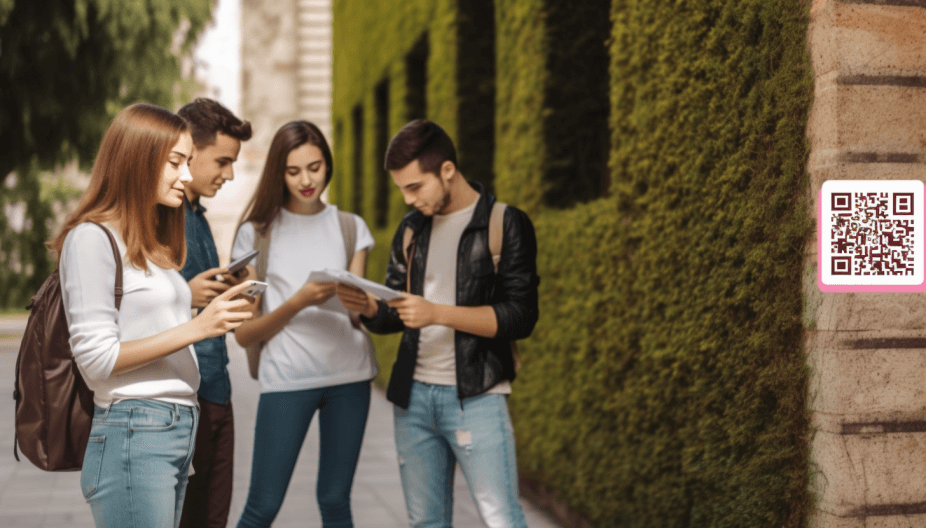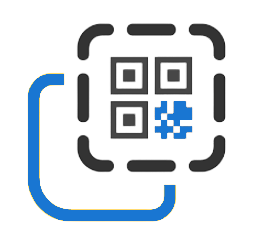Map QR code: features, benefits, and use examples
When we plan to visit a new place, we are naturally inclined to gather as much information as possible. From exact addresses to nearby objects and additional landmarks, these details shape a seamless navigation experience. It's no wonder that across the globe, people are turning to Internet maps to chart their way to their chosen locales.
You could manually type the establishment's name or the precise address in a search bar. But it is much easier and more convenient to use a QR code map. Thanks to it, the user can quickly get acquainted with the necessary information for route planning without spending time searching and specifying coordinates.
What is a map QR code?
The maps QR code is a specialized QR code type that contains the coordinates of a location (latitude and longitude) or a direct link to a map. Its primary purpose is to enable users to swiftly and conveniently access information about specific places, including restaurants, parks, offices, swimming pools, hospitals, shopping malls, and more.
When a mobile device scans such a QR code, users are automatically redirected to an application, website, or other service that showcases the object's precise location on a map. This tool holds immense value for businesses, government agencies, educational institutions, etc.
Benefits of using a map QR code
 Inherently, QR codes streamline access to information, making it notably convenient. When it comes to discussing QR code maps, their key advantages encompass
Inherently, QR codes streamline access to information, making it notably convenient. When it comes to discussing QR code maps, their key advantages encompass
- easy access. Almost everyone in the modern world uses smartphones, and the maps QR code is optimized for mobile devices. This optimization ensures a straightforward scanning process and convenient viewing of locations on the screen;
- instant information. When you generate a QR code with a map QR code generator free, your users can instantly get location information by simply scanning the code. This efficiency translates into significant time savings;
– data accuracy. The map QR code contains the exact location coordinates, which eliminates the chances of misinterpretation or address-related errors. Users can bypass the hassle of manual entry, reducing the risk of confusion;
– performance monitoring. The option to track the number of QR code scans and evaluate its effectiveness proves invaluable for businesses. This insight informs strategic decisions, whether for advertising campaigns or the launch of new initiatives.
An interactive map QR code provides easy and quick access to the location of a particular object. Its simplicity in both creation and scanning renders it indispensable across various industries.
The versatility of map QR code applications
QR codes for geolocation find utility across many areas. Consider the following examples:
1. Tourism. The management of museums and tourist sites like historical monuments can use map QR codes to help visitors get to their destination conveniently and safely. For example, displaying QR codes featuring the geolocations of popular city attractions on central bulletin boards is a smart move.
2. Retail. Retail outlets, supermarkets, and businesses strategically place QR codes with location data on social media, websites, and promotional materials so that customers can easily find them and make a purchase. This helps drive footfall and sales.
3. Event management. QR maps streamline the process of navigating through gatherings. Placed on tickets, event programs, and brochures, they guide attendees to precise event locations, enhancing the overall experience.
 4. Marketing. Businesses in the B2C segment prefer to use map QR codes on promotional materials like posters, brochures, and advertisements. These codes lead customers to websites or offline stores, exhibiting significantly higher conversion rates than ads without interactive codes.
4. Marketing. Businesses in the B2C segment prefer to use map QR codes on promotional materials like posters, brochures, and advertisements. These codes lead customers to websites or offline stores, exhibiting significantly higher conversion rates than ads without interactive codes.
5. Education. A QR code map can serve as a navigational tool in large institutions. A striking example is the use of such codes in educational establishments. Placing QR codes featuring the locations of libraries, gyms, and other facilities across campuses aids students in easy navigation.
6. Real estate. The map QR code streamlines communication between real estate agents and potential buyers. When a potential buyer wants to view a property, scanning a QR code with geolocation is sufficient to chart a route and swiftly reach the meeting point with the realtor or owner. It's a proven practice that QR codes with maps expedite property sales and elevate transaction experiences.
Undoubtedly, map QR codes offer a convenient means of providing precise location details. They are actively used in various fields, effectively streamlining navigation and enhancing user engagement.
How to create QR code for map
 To quickly and successfully convert map to QR code, use the GET-QR service. Our functional QR code generator allows you to add files and links to QR codes, including data about the location of a specific object on the map.
To quickly and successfully convert map to QR code, use the GET-QR service. Our functional QR code generator allows you to add files and links to QR codes, including data about the location of a specific object on the map.
Here is a quick guide on how to make QR code for map:
– open the GET-QR QR code generator and select the QR code type “Map”;
– specify the location data in one of three ways: add a link to the map, specify the latitude and longitude, or enter a query to find the object coordinates;
– customize the QR code design to your preference, enhancing its style or preserving the default design;
– preview your QR code by clicking "Create";
– download the code in your desired format and size using the "Download" button or print it with the "Print" option.
Converting a map to QR code offers a straightforward way to share your location with others. If you need to share object location data with friends, family, colleagues, or strangers, display or send them the appropriate QR code. Furthermore, generating a geolocation QR code does not require complex skills; you only need a QR code generator for map location and a few minutes of free time.
